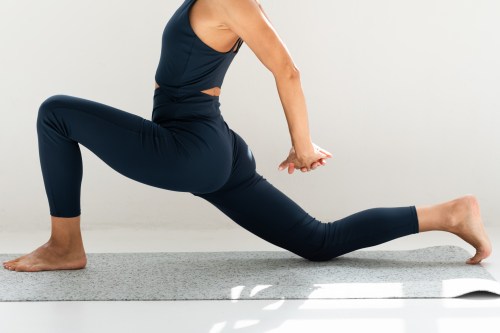The first time I stepped inside a Pilates studio, I saw a bunch of women lying on their sides, lifting and lowering their legs just a couple inches, and I thought to myself, “Well, this will be easy.” I was so very, very wrong. Once my session started, it only took one exercise before my lower abs were aching like they’d never been used before.
Experts in This Article
If I hadn’t tried Pilates myself, I may have never known how badly I’d underestimated it. But I wouldn’t be alone: Even as Pilates grows ever more in demand (the International Health, Racquet & Sportsclub Association ranked it as the most popular gym activity for women, according to The New York Times), plenty of people still give it side-eye from outside the studio.
On a mission to myth-bust, I asked a couple of Pilates instructors about some of the biggest misunderstandings among the Pilates-curious, and why those beliefs are wrong.
Myth No. 1: You need to be flexible to do Pilates
When Joseph Pilates first brought his practice to the United States in the 1920s and ’30s, some of his first big clients were dance icons like George Balanchine and Martha Graham. Even today, many professional dancers are Pilates devotees. So it’s not totally uncommon to see extremely high legs floating up toward people’s ears in Pilates classes—but that doesn’t mean you need that range of motion to do the exercises.
“Pilates is accessible for everybody, at any age, and any body type,” says Bianca Melas, an Alo Moves Pilates instructor who recently designed the platform’s 14-Day Power Pilates series. “Through regular Pilates, you will improve your flexibility”—as well as your strength and posture.
Yet Pilates isn’t really a stretching workout, which is a related misconception. “Pilates is actually a strength-training workout, primarily focused on the core,” says Heather Andersen, owner of New York Pilates. Those legs reaching up in the air? Their purpose is to challenge your core stability.
Try this full-body Pilates workout to see what we mean:
Myth No. 2: Pilates is just for thin women
Fun fact: When Joseph Pilates and his wife Clara first opened their studio in New York City, 60 percent of the clientele were men, according to the Pilates Foundation. But the stereotypical Pilates practitioner today is more ballerina than bodybuilder, thanks again to the influence dancers have had on the method. This can keep men from trying it, Melas points out. It can also make Pilates feel out of reach for anyone who doesn’t have that archetypal “dancer’s body.”
The truth, however, is just the opposite. Pilates can be tailored to any body type, any skill level, any ability. “It’s actually one of the most accessible practices out there,” says Andersen. “We’re able to modify it for someone who’s deconditioned, who has injuries, who’s older. But then we’re able to advance it for someone who’s very strong.”
Myth No. 3: The reformer is scary
With all the straps and springs connected to Pilates apparatuses, you’d be forgiven for thinking they were designed more for inflicting pain than building strength. Andersen says many first-timers find them incredibly intimidating.
“I always think this reaction is funny, because when you actually get on the reformer, it feels really assistive, and it’s really fun, and it glides!” says Andersen. In many ways, Pilates equipment like the reformer or cadillac are meant to help you do the exercises more fully by counterbalancing some of your weight. (Though, TBH, the sliding movement on the reformer can sneakily challenge your core strength.)
Myth No. 4: Pilates is related to yoga
People who are unfamiliar with Pilates and yoga sometimes conflate the two. “Both are performed on the mat, low impact, have a focus on breath, and mostly bodyweight exercises,” says Melas. Andersen adds that they both also have a mind-body component.
The difference? Yoga is based in ancient Indian spiritual practices. “Its primary purpose is meditative even before it being a fitness regimen,” says Andersen. Pilates, on the other hand, is a physical discipline first and foremost. Melas explains it’s about “specific, targeted exercises focusing on the core, posture, body alignment, and overall strength.”
Both can have their place in your fitness regimen, but you’ll be getting different benefits out of each. The best way to get a feel for the distinction is to hop on a mat, and give both a try.
Feel for yourself how Pilates can fire up your core:
Sign Up for Our Daily Newsletter
Get all the latest in wellness, trends, food, fitness, beauty, and more delivered right to your inbox.
Got it, you've been added to our email list.











